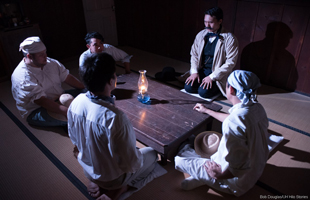Patsy Iwasaki, a lecturer in communication and English at the University of UH at Hilo, is bringing to life the legacy of Japanese immigrant Katsu Goto. Iwasaki, a media advocate using filmmaking to “heal, impact and inspire diverse audiences to promote peace and equity,” is executive producer of the documentary film, Honokaʻa Hero: The Story of Katsu Goto, and she has big ambitions for the project.
“I want to take this to the next level, get national interest,” she says.

The story of Katsu Goto has its roots beginning in 1885, when, at the age of 23, he traveled to UH to be a laborer on a sugar plantation in Hāmākua, UH Island. When his contract was completed, he forged a path to become a local businessman and leader in a small Japanese community in the town of Honokaʻa, where he opened his own retail store while also fighting for the rights of his fellow community members working as plantation laborers.
But his business success and selfless service ultimately led to a tragic end—on October 29, 1889, Goto was found hanging from a telephone pole, lynched in Honokaʻa town.
Today, 127 years later, the story is being brought back to life with the help of modern technology and the vision of Iwasaki. She was inspired to research the story of this little known Japanese immigrant after being the first to receive an award from the Goto of Hiroshima Foundation. Iwasaki was granted funding to travel to Japan in 1993, and her journey began.
Making a documentary film

This year, Iwasaki and her team are taking the story to the next level and making a full-length documentary with sponsorship from the Katsu Goto Memorial Committee of the Honokaʻa Hongwanji Mission, an affiliate of the Honpa Hongwanji Mission of UH.
Iwasaki enlisted the help of Jackie Pualani Johnson, professor of drama, and a crew of students, recent graduates and community members. Johnson says that her interest was piqued when she saw a trailer that Iwasaki produced with Miller for the Bishop Museum exhibit.
“When I saw the quality that they were striving to achieve, I immediately wanted to be a part of it,” says Johnson.
Iwasaki and crew had already begun filming interviews in 2014 and, with Johnson’s help, began filming reenactment scenes in 2016. This past year they have had approximately 40 actors and production members collaborate with them on the project.
For more information, read the full article at UH Hilo Stories
—From UH Hilo Stories, Lara Hughes, public information intern in the Office of the Chancellor.


